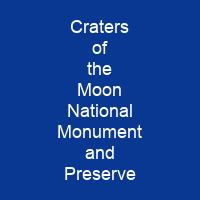Discovering the Enigma of Craters of the Moon
‘Is there a place on Earth that can make you feel both humbled and inspired at once?’ If so, then Craters of the Moon National Monument and Preserve in Idaho is one such destination. Nestled between Arco and Carey, this vast expanse of volcanic wonder has been drawing visitors for decades with its unique landscapes and rich history.
The Monument’s Beginnings
‘How did this land come to be?’ The Craters of the Moon Lava Field, the largest mostly Holocene-aged basaltic lava field in the contiguous United States, covers 618 square miles. Established on May 2, 1924, it was expanded by President Clinton’s proclamation in November 2000, bringing its total size to approximately 1,036,700 acres (4,186 km²).
Geological Marvels
‘Can you imagine a place where the earth itself is constantly rewriting its history?’ The monument contains over 25 volcanic cones, including spatter cones, with 60 distinct solidified lava flows ranging in age from 15,000 to just 2,000 years. The Great Rift, a National Natural Landmark, creates the Craters of the Moon, King’s Bowl, and Wapi lava fields.
Exploring the Lava Fields
‘What secrets lie hidden beneath these blackened landscapes?’ The park offers various trails for exploration. The Devils Orchard Nature Trail is a paved, accessible 0.5-mile loop through lava-transported cinder cone fragments and trees. Meanwhile, the Broken Top Loop features some of the greatest geological and ecological diversity in the park.
Nature’s Resilience
‘How do plants and animals survive in such harsh conditions?’ Despite the challenging environment, over 600 species of plants grow here. Animals like pronghorns and bats have adapted to cope with the extreme temperatures and limited water sources.
Wildlife Wonders
‘What unique creatures call this place home?’ The park is home to over 2,000 species of insects, 12 reptiles, 203 birds, 59 mammals, and three amphibians. Unique species like the Great Basin pocket mouse, American pika, and yellow-pine chipmunk can be found only at Craters of the Moon.
Human History
‘Who were the first to set foot on this land?’ Paleo-Indians visited the area about 12,000 years ago, and the Northern Shoshone created trails through the lava field during their summer migrations. Geologist Harold T. Stearns coined the name ‘Craters of the Moon’ in 1923.
Preservation Efforts
‘Is there a future for this land?’ The park is co-managed by the National Park Service and the Bureau of Land Management, with efforts ongoing to expand the protected area into a national park. In 1970, Congress designated a part of the monument as Craters of the Moon National Wilderness Area.
Astronomical Wonders
‘Can you imagine looking up at the stars from this remote location?’ The park was designated an International Dark Sky Park in 2017, preserving its naturally dark night skies. NASA used the area as a training site for Apollo astronauts, who studied geology and collected rock specimens there.
Recreational Activities
‘What can visitors expect when they visit?’ The park offers various recreational activities such as hiking on trails with accessible volcanic formations, wildflowers, and wildlife. A visitor center is located at the entrance of the Loop Road with displays, publications, and ranger-led programs available.

Conclusion
‘Is there a place that can inspire you more than Craters of the Moon?’ This vast expanse of volcanic wonder is not just a natural landmark but a testament to the resilience and beauty of nature. Whether you’re a geology enthusiast, an astronomer, or simply someone seeking adventure, Craters of the Moon National Monument and Preserve offers something for everyone.
You want to know more about Craters of the Moon National Monument and Preserve?
This page is based on the article Craters of the Moon National Monument and Preserve published in Wikipedia (retrieved on December 4, 2024) and was automatically summarized using artificial intelligence.







